Red pimples on the body cause a lot of inconvenience to their “owner”. Rashes can appear at any time, especially annoying when it happens before an important meeting or event. Many pimples are accompanied by an acute inflammatory process and pain, others disappear on their own, without causing any inconvenience to the person, except for aesthetic unattractiveness. What could it be and what to do if red rashes appear?
Unfavorable factors affecting the formation of acne
Red pimples on the body occur due to certain reasons.
The most common provoking factors are:
- Deficiency of useful components . Small pimples on the body of an adult are often caused by a lack of vitamins and minerals. This process leads to disruption of the functioning of organs and systems, which is accompanied by damage to the upper layer of the skin.
- Digestive system disorders . Often small pimples on the body, in particular on the face, indicate problems with the gastrointestinal tract. Rashes can be triggered by poor diet, consumption of junk food and constant overeating.
- Allergic reaction to cosmetics . Itchy pimples after applying your favorite cream indicate its intolerance by the body, that is, the development of an allergy. In this case, the components of the product clog the pores, causing profuse rashes in the form of red dots on the body and inflammation.
- Hormonal imbalances provoke the formationacne on the back and other parts of the body. Peak hormone activity occurs during adolescence. Small pimples on the body of women are associated with the phase of the menstrual cycle; pimples often appear before menstruation.
- Systematic nervous tension . Stress and nervousness negatively affect the functioning of all organs and systems of the body. Disturbances in coordinated functioning contribute to the appearance of acne throughout the body.
- Periodically occurring rashes are a consequence exposure to external stimuli on the body . These include temperature changes, fabrics and allergens.
- Insufficient hygiene . Lack of proper skin care increases the risk of developing inflammatory processes. Small pimples on the body act as a natural reaction of the body to non-compliance with hygiene procedures.
It is important to remember that only a doctor can determine the true reason why pimples appear. All of the above factors are harmless. Serious diseases of both the skin and internal organs can lead to the formation of pimples on the body of an adult.
Allergic dermatitis
Red pimples on the body are often the result of an allergic reaction. Excessive rashes can appear if you choose the wrong cosmetic and care product. Often their development is due to the negative impact of biological and physical factors.
Allergic type dermatitis provokes small red pimples on the skin. Medicinal and chemical substances act as potentially dangerous allergens. People often experience an allergic reaction in the form of red dots on their legs and arms to the components contained in washing powder. Pimples on the scalp in the hair of men and women can be a consequence of individual intolerance to the components of the shampoo.
Allergic type dermatitis is characterized by the following symptoms:
- small red rashes ;
- itching ;
- the appearance of crusts on the skin .
Acne on the skin is eliminated by eliminating the allergen. A person needs to reduce or completely eliminate contact with a potentially dangerous substance. For a speedy recovery, it is advisable to use topical ointments, in particular Fenistil and Akriderm. In acute cases of the disease, it is necessary to use systemic anti-allergy medications - Claritin and Cetrin.
Prurigo: purulent papules
Pimples on the body itch due to the development of prurigo; this disease is characterized by the formation of papules. As the pathology progresses, pus forms in their cavity. Prurigo, or prurigo (the medical name of the disease) is recorded in both children and adults. In babies it is a reaction to complementary foods.
Rashes appear on the body due to the negative effects of infectious agents, chronic diseases and helminthic infestations. Pink pimples indicate the development of pathology; it is possible that pimples may form, which eventually become covered with a thin crust. They can be very itchy, which forces a person to scratch the skin until red spots appear.
Systematic mechanical damage leads to the appearance of dense nodules, the diameter of which reaches 5 mm. Pimples itch, causing general discomfort. The child may experience loss of appetite, increased irritability and sleep disturbances. Adults tolerate prurigo more easily; they experience only intense itching. It is not recommended to scratch the rash; there remains a high risk of infection, which is accompanied by suppuration.
Skin treatment involves following a diet. Potentially dangerous allergens must be removed from the diet. Additionally, it is recommended to avoid spicy, smoked and fatty foods. A person needs to normalize the functioning of the digestive system and prevent constipation. To speed up the recovery of the body, antihistamines are used: Loratadine, Diazolin and Clemastine. The rash becomes smaller on the second day after the start of treatment.
Scabies and demodicosis
Pimples on the body itch due to damage to the skin by potentially dangerous microorganisms. Parasitic diseases caused by their exposure are accompanied by red pimples and pimples on the body and unbearable itching. The most common pathologies are scabies and demodicosis.
The rashes that appear are caused by the penetration of the female scabies mite under the skin. They lay larvae in the upper layers of the epidermis, causing the formation of small papules and blisters. Treatment consists of constantly changing bed linen, following a diet and using medications. The most popular medical products are Lindane, Ivermectin, Spregal and sulfur ointment. The preparations are applied to the skin in a thin layer, several times a day.
Treatment of scabies and demodicosis is carried out in the evening, this is due to the nocturnal activity of pathogens. The optimal treatment regimen is prescribed by a doctor based on laboratory tests.
Folliculitis
Do small pimples itch on your body, but general discomfort affects your quality of life? The development of folliculitis cannot be ruled out. This disease is accompanied by the formation of papules, pimples and blackheads on the scalp. Small rashes appear throughout the body. Red pustules often appear on the trunk and limbs. Their development is caused by damage to the skin by staphylococci and streptococci.
Itchy rashes are a consequence of weakened protective functions of the body, unbalanced nutrition, excessive sweating and disturbances in the functioning of the endocrine system. This disease can be eliminated through diet and topical medications. Small rashes disappear 3-5 days after the start of intensive therapy.
To treat fungal folliculitis, antifungal drugs are used, in particular Nizoral and Exoderil. If the pathology is caused by a viral infection of the body, Acyclovir is used.
Viral diseases
The body itches in different places due to a viral infection of the skin. Pathogenic agents cause the development of herpes zoster and lichen. Large pimples and blisters appear on the body; they itch intensely, causing a lot of inconvenience to the person. They appear on any part of the skin and are accompanied by the formation of crusts. When blisters develop, a person becomes dangerous to the people around him.
The development of viral-type pathologies is provoked by a decrease in the body’s protective functions, stressful situations, long-term use of antibiotics and the development of oncology. A distinctive feature of shingles is the rapid progression and appearance of acne in pairs.
Treatment of herpes and other viral pathologies involves the use of antiviral drugs - Acyclovir, Pentalgin and Diclofenac. The use of these remedies eliminates rashes, pain and inflammation. The skin is constantly cleansed with ordinary water; skin care products are prohibited. Bed linen is changed daily, a person uses an individual towel and household items.
Hormonal disorders
In adolescence, a rash appears under the influence of hormonal imbalances. There are not so few rashes; they are localized mainly on the face, neck and chest area. Dense acne on the body does not cause discomfort. The bluish-red hue of the rash attracts attention. However, apart from being aesthetically unattractive, the rashes do not pose any danger. Read more about acne treatment →
The rash can also appear in women, depending on the phase of the menstrual cycle and the general condition of the body. If there are rashes caused by hormonal imbalances, no special treatment is required. It is enough to normalize your diet and monitor the skincare products you use. If painful and profuse rashes appear, and this process is systematic, it is advisable to check the level of hormones.
There are many provoking factors that cause the development of formations. If one pimple pops up, and a similar phenomenon occurs periodically, there should be no reason to worry. If itchy blisters form, accompanied by pain and burning, it is advisable to visit a doctor.
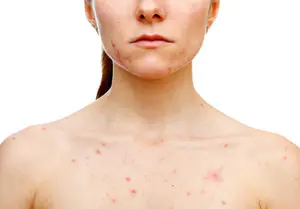
The appearance of acne on the skin is a serious concern, because red pimples on the body itch and do not look aesthetically pleasing.. Sometimes they can become inflamed, and then other unpleasant symptoms are added to the itching. Pimples can be large and small, red and white. The reasons for their appearance can be very different. Therefore, before fighting them, you need to identify the source of their appearance.
If you don't do this, then after treatment the skin rashes will not only not go away, but will also become larger. Moreover, if treated incorrectly, seemingly harmless acne can cause quite dangerous complications.
Types of acne
The skin on the body is denser than on the face and has more effective protection. It would seem that this should protect it from the formation of inflammatory elements, but in reality this is not the case. Very often, under the influence of internal and external factors, both primary and secondary foci of inflammation are formed on the body. Moreover, depending on the reason that caused them, pimples may vary in shape, color, size and possible contents.
Watery pimples
Such skin rashes have the shape of dome-shaped blisters. They are located in the superficial layers of the epidermis and contain a clear, less often cloudy liquid. The color of such pimples is usually flesh-colored, less often red.
The appearance of watery rashes on the skin may indicate that the patient has the following health problems:
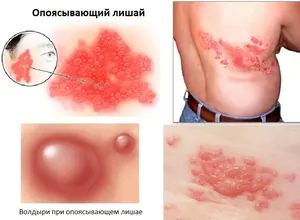
Scabies. This is a fairly common skin disease. It is caused by the scabies mite. After infection with the parasite, small itchy whitish nodules appear on the patient’s skin, which, after some time, turn into blisters. Due to the fact that the patient begins to scratch the rashes and opens some of them, scabies is often complicated by a bacterial infection.- Shingles. It appears due to the entry of the varicella-zoster virus into the human body. Red pimples appear on the body and itch. There are a lot of them and they are located on one side of the body along a large nerve trunk. The appearance of rashes is preceded by local swelling of the tissues.
- Pemphigus. This is a serious illness that affects the immune system. It is quite rare. The body's defense mechanisms fail and begin to recognize skin cells as foreign agents, as a result of which they attack them. A watery rash appears on the surface of the skin, which quickly opens. In its place there remain vast areas of erosion.
- Dyshidrosis. This disease manifests itself as multiple pimples on the body, inside of which there is watery content. The blisters open over time and in their place, rather painful cracks remain in the skin, causing a lot of suffering to the patient. The disease is based on problems with the digestive and endocrine systems.
- Photodermatitis. This is a rare reaction of human skin to sunlight. Under the influence of ultraviolet radiation, the skin quickly becomes covered with small, watery rashes. Their appearance is often accompanied by a strong burning sensation.
Watery skin rashes in the vast majority of cases are the result of internal diseases. Therefore, it is impossible to get rid of them without treating the underlying pathology.
Red rashes
Formations on the skin that are colored red may look like nodules and spots that rise above the skin.
Typically, such rashes appear in the following cases.
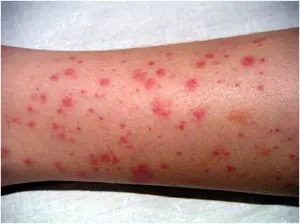
Allergic reaction. We are talking about the pathological reaction of the body to certain external and internal stimuli. We are talking about food products, medicines, household or industrial dust, chemicals, fabrics, etc.- Syphilis. Skin rashes are the first symptom of this disease. The rash appears randomly on the patient's body. Depending on the stage of the disease, acne may appear as small bluish or red-pink bumps or large purple bumps.
- Bacterial meningitis. This disease affects the membranes of the brain and spinal cord. At the very beginning of its development, pathologies can manifest themselves as a red nodular rash. When pressed, the nodules do not disappear and do not change color.
- Infectious endocarditis. This is a pathology of the heart valves. One of the symptoms of the disease is the appearance of red pimples on the body, which turn pale when pressed. Later the rashes turn brown.
- Hemorrhagic vasculitis. This is a septic lesion of the vascular network that penetrates the skin. It manifests itself as the appearance of many small blood clots, which, in turn, cause rashes on the surface of the skin.
The origin of red pimples on the skin is dictated by a variety of factors. Therefore, when making an accurate diagnosis, the doctor must take into account not only the symptoms of various diseases, but also what medications the patient has recently taken and what food he has eaten.
White pimples
Whitish rashes with a pronounced “head” and pain when pressed are often called purulent pimples. They appear mainly due to infectious skin lesions.
Inside each purulent pimple there is a cloudy exudate, which comes out with strong pressure.
The occurrence of such rashes is due to the following factors:

Secondary bacterial infection. It appears when scratching the primary rash.- Folliculitis. With this pathology, inflammation of the hair follicle occurs, on the basis of which a purulent nodule later forms.
- Furuncle. This is inflammation of several nearby hair follicles. Most often, the disease is caused by Staphylococcus aureus.
- Acne. This type of rash is caused by excess sebum production. This leads to inflammation of the ducts of the sebaceous glands and the formation of purulent acne.
White pimples are dangerous because if not properly treated, they can leave behind unsightly scars and scars. Therefore, when such formations appear on the skin, you need to seek help from specialists.
Large formations
Large pimples on the body itch much more than small ones. This is explained by the fact that large rashes affect not only the surface, but also penetrate into the underlying layers of the epidermis. Around such pimples there is redness and swelling of the tissues. They need to be treated more carefully, because if a bacterial infection is added to such formations, they can cause serious damage to the body. In addition, without proper treatment, such acne leaves behind deep scars.
Single pimples
Rare pimples on the body itch no less than large ones, since they are often accompanied by dryness or, on the contrary, wetting of the tissues. Such skin formations often become the source of various purulent processes in the body.
Rare pimples should not be taken lightly, because they are often symptoms of dangerous internal diseases that need to be treated urgently.
Causes of skin rashes
Rashes most often indicate the presence of some disease. Therefore, it is not worth dealing with the problem without a preliminary visit to the doctor.
In most cases, it is impossible to make a diagnosis based on a simple visual examination, so additional studies are required in the hospital to clarify the diagnosis:
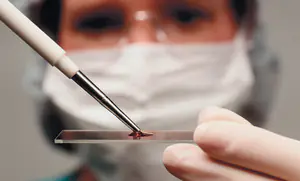
blood and urine analysis for general indicators;- blood biochemistry;
- analysis of hormone levels in the blood;
- Ultrasound of the stomach and intestines;
- nasopharyngeal swabs;
- allergy tests.
Based on the test results, the doctor prescribes the appropriate treatment. It can be aimed both at the initial pathology and at its manifestations - acne.
Treatment of skin rashes
Treatment of skin pathologies can begin only after an accurate diagnosis has been made. If acne is the result of an allergic reaction, then taking an antihistamine may be enough to get rid of it. When rashes are caused by internal diseases, then after eliminating the root cause, pimples and blemishes may disappear on their own. In some cases, doctors speed up their disappearance with the help of various medications.
The most difficult to treat is acne caused by an autoimmune disease. Doctors have to carefully select combinations of drugs for oral and external use.
Most often, doctors prescribe the following balms and ointments to combat rashes:

salicylic-zinc ointment;- psilo-balm;
- locoid;
- pantestin;
- levomekol;
- Sulfuric ointment.
Rashes caused by the parasite can be removed in only two steps. First, the causative agent of the pathology is destroyed, and then doctors eliminate the harm caused by it.
You can treat acne from insect bites and prickly heat on your own. In other cases, you should definitely consult a doctor, because a rash can be a symptom of many dangerous diseases that can take a person’s life.
Precautionary measures
If red pimples appear on the body and itch, then they cannot be ignored, especially when they do not go away for a long time. Also, you should not try to treat them with inappropriate means, such as hormonal ointments. The fact is that even a small amount of hormones in a product for external use can change the course of the disease or change it, making it more dangerous.
If the origin of the pimples is unclear, then under no circumstances should you try to cauterize them or remove the crust that has formed after a breakout. This can contribute to an increase in the number of rashes, as well as their spread to other areas of the body.
Do not scratch the rash. The wounds left from scratching are highly likely to become infected, which can ultimately lead to the development of a deadly complication - sepsis.
Untreated acne can lead to unpleasant consequences for human health. To avoid them, you just need to promptly seek help from a doctor immediately after the rash appears. In this case, it will be much easier for the doctor to make an accurate diagnosis and prescribe effective therapy. This will significantly speed up recovery.
The greatest concern is a rash on the body in the form of tubercles and pimples, which itch and itch, causing discomfort. Such symptoms cannot be ignored, since they often signal some kind of malfunction in the body. These can be both minor disorders and serious diseases that require timely and competent treatment.
Possible causes of rash all over the body
Skin that is smooth and clean usually indicates good health. But even the healthiest people experience disruptions in the body, which often affect the condition of the epidermis. There are a large number of diseases that could cause an itchy rash all over the body. Therefore, using only local drugs for treatment is inappropriate, especially without consulting a specialist. Self-medication will not only not give lasting positive results, but will also worsen the condition of the epidermis.
The following dermatological lesions of the body often provoke the formation of small pimples on the body that itch:
- allergic reaction to any external or internal irritants;
- hives;
- prickly heat;
- eczema;
- herpes virus infection;
- nervous system disorders;
- shingles;
- reaction of the epidermis to ultraviolet radiation;
- lesions caused by scabies mites;
- alcohol abuse;
- hormonal imbalance;
- infectious diseases;
- psoriasis;
- demodicosis;
- atopic dermatitis;
- metabolic disorders, etc.
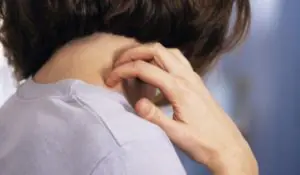
Each of these factors can act as a cause for the formation of pimples on the body that itch and itch. It is advisable to consider each of them separately.
Allergy
Pimples on the body often appear as a result of an allergic reaction of the body, both to external and internal factors. The most common allergens:
- ordinary dust;
- animal hair;
- underwear and clothing made from non-natural materials;
- some food products;
- medicines;
- cosmetical tools;
- flowers.
An allergic rash is often accompanied by symptoms such as small rashes in the form of pimples that itch and cause discomfort. The rash can appear on any part of the body, including the face.
One of the types of allergies is atopic dermatitis, which is accompanied not only by the appearance of pimples on the body, but also by dryness, irritation and itching of the affected areas of the epidermis.
Treatment of allergic manifestations is carried out with antihistamines, both for local use and for oral administration.
It is also very important to identify the allergen and exclude all contact with it. Effective anti-allergy drugs:
- Zyrtec;
- Diphenhydramine;
- Allertek;
- Fenistil;
- Solcoseryl.
In some cases, hormonal ointments are prescribed.
Prickly heat

With excessive sweating, a person may develop prickly heat. This phenomenon is especially common in the hot season, and children suffer from prickly heat more often than adults. It appears in the form of red pimples on the body, appearing on the back, chest, armpits, on the bends of the elbows and knees.
Treatment involves maintaining careful hygiene and using local antiseptics.
Eczema
Chronic dermatological damage to the body is eczema, the occurrence of which is caused by allergic reactions, hereditary predisposition, hormonal imbalance, damage to the digestive system, psycho-emotional unfavorable state, etc.
Symptoms of eczema include itchy small pimples, ulcers and other unpleasant signs characteristic of an inflammatory process on the skin.
To treat eczema, drugs are used whose action is aimed at eliminating the cause of its development.
For example, antidepressants, anti-allergy medications, hormonal drugs, immune system boosters, antibiotics, vitamin complexes. Local therapy involves the use of special medicinal ointments, lotions, gels, talkers, as well as physiotherapeutic procedures.
Herpes virus infection
Sometimes pimples and pimples on the body that itch indicate the manifestation of one of the forms of diseases caused by the herpes virus.

itching, discomfort on the skin several hours before the rash occurs;- hyperemia of the affected areas of the epidermis, swelling;
- the appearance of weeping small inflammatory elements merging with each other;
- opening of bubbles and formation of crusts.
In this case, the affected areas of the epidermis are very itchy, and a burning sensation may be observed. When infected by airborne droplets, the symptoms of herpes are localized in the upper part of the body, and sexual transmission provokes the development of genital herpes.
The occurrence of such signs requires immediate medical attention, since neglecting them is fraught with serious health consequences.
Treatment of rashes on the body is carried out using antiviral ointments and tablets for oral administration. It would be a good idea to use antiseptics to prevent secondary infections. It is also necessary to strengthen the immune system with special medications.
You should not use hormonal medications that only relieve a symptom on the skin, but do not treat a disease that subsequently becomes chronic.
Neurosis
Along with any serious dermatological diseases, disorders of the nervous system cause itchy skin and rashes on the body. This phenomenon is especially pronounced at night in combination with insomnia.
Nervous urticaria is characterized by the formation of blisters and blisters that are itchy and painful. To eliminate signs of the disease on the body, antiallergic drugs are used, for example, Tavegil, Suprastin, Zyrtec, Fenistil and Diazolin. And also such ointments as Desitin, zinc ointment, Skin-Cap, etc.
Hives

The appearance of a rash on the skin of the body, similar to insect bites, indicates the development of a dermatitis called urticaria, which is provoked by insect bites, allergies to certain foods or medications.
Before you begin treatment for urticaria, you need to determine the cause of its occurrence. Medicines are usually used in the form of tablets, ointments, and injection solutions. It is necessary to follow a special diet, carry out physiotherapeutic procedures, and take measures to strengthen the immune system.
Photodermatitis
With increased sensitivity to ultraviolet radiation, a disease called photodermatitis appears, which is characterized by the formation of pimples and bumps on the body that are itchy and sometimes painful. There is also dryness and swelling of the affected areas on the surface of the epidermis.
The development of the disease is caused by a decrease in the body's defenses, metabolic disorders, and external factors, such as the interaction of creams and cosmetics with ultraviolet radiation. People most susceptible to photodermatitis are people with fair skin types, as well as young children whose immune systems are imperfect.
Photodermatitis may not appear immediately, but some time after exposure to the sun.
In this case, the patient experiences weakness, deterioration of health, and nausea. Sunlight allergy therapy involves the use of the following:

zinc paste, Panthenol, Methyluracil;- a nicotinic acid;
- vitamin complexes;
- medicinal herbs – string, calendula, chamomile.
If dermatitis is caused by an internal disease, then first a course of treatment is required for the underlying disease.
Scabies
This skin lesion is caused by a scabies mite bite. Symptoms of the lesion appear immediately after the larvae come into contact with the skin. The locations of the scabies rash are the areas of the epidermis between the fingers and toes, the stomach, chest, butt, and limbs.
The main signs are a feeling of severe itching and the appearance of small pimples on the skin of the body. Signs of scabies can easily be confused with other dermatitis, for example, with manifestations of food allergies, so if such symptoms occur, it is better to immediately contact a competent specialist.
This disease is very contagious and is transmitted through household contact, so treatment must be carried out on all family members at the same time. Topical products used:
- Sulfuric ointment;
- benzyl benzoate;
- Spregal spray;
- Medifox.
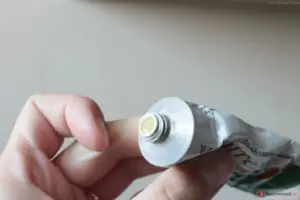
When using any of these products, water procedures are not recommended; you will be able to swim only on the fifth day. During treatment, the affected skin may itch even more than usual. But with proper treatment, the symptoms of scabies mite bites subside within a few days.
Psoriasis
Symptoms of psoriasis can occur on any part of the body, including the scalp. This disease usually occurs in a chronic form, and it begins with the appearance of small pimples and nodules on the body.
The causes of the disease include metabolic disorders, genetic predisposition, weakened immune defense, infectious diseases, etc.
Since psoriasis is a systemic lesion of the body, affecting internal organs and systems along with the dermis, it requires timely and well-chosen treatment.
Psoriatic rash has a tendency to merge inflammatory elements and form plaques characteristic of this dermatosis. The following drugs are used for treatment:
- a nicotinic acid;
- antiallergic drugs;
- medications to normalize liver function;
- calcium gluconate;
- Sulfuric ointment;
- naphthalan ointment;
- zinc paste;
- salicylic ointment.
No less effective is the use of methods from traditional medicine, which involves making decoctions and infusions from medicinal plants.
Demodicosis
Subcutaneous mite or demodicosis is a fairly serious dermatological disease, the favorite place of which is the human face. But it is possible that its characteristic signs may appear in various parts of the human body.
- hyperemia and peeling of the affected areas;
- red rash that is very itchy and itchy;
- the formation of small abscesses, through which re-infection with pathogenic microorganisms often occurs.
Treatment of demodicosis usually takes a very long time, especially if the recommendations of the attending physician are not followed. Local therapy:
- sulfur-tar ointment;
- benzyl benzoate;
- zinc paste;
- tetracycline ointment.
Oral medications:
- Trichopolum;
- Diazolin, Zyrtec, Zodak and other anti-allergy medications;
- antimycotic and antibacterial drugs;
- vitamin complexes, etc.
It is very important to maintain personal hygiene and eat right.
Conclusion
The appearance of an itchy rash on the body should not be ignored, even if there is no suspicion of a serious illness. After all, severe itching can cause increased irritability, insomnia, and nervousness, which, in turn, often provoke the development of serious pathologies in the body.
As preventive measures, it is recommended, first of all, to maintain careful body hygiene, proper diet, as well as exercise, avoidance of stressful and conflict situations, frequent exposure to fresh air, proper rest and sleep.



